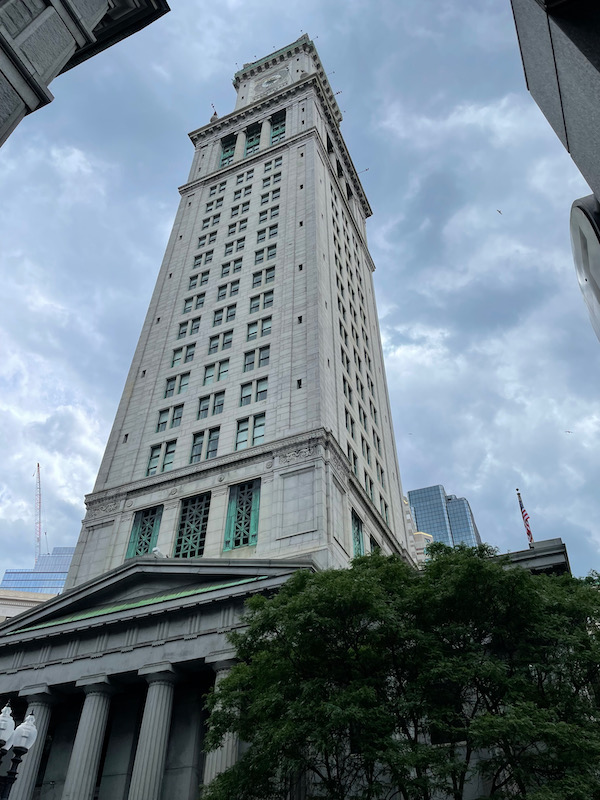Our Blog - Boston, MA
We only had a couple days in Boston, and since we had been there a few times before, we tried to see a few things that we hadn't before (like the JFK Presidential Library, which has its own blog post). We started at the Boston Commons, and got a little peek at the Massachusetts State House and its dome. The building was completed in January 1798 and is one of the oldest state capitols in current use. It originally had a wood dome but it was covered with copper in 1802 to stop it from leaking. A bit of trivia, it was done by the Paul Revere Copper Company. Revere was the first American to roll copper successfully into sheets (for copper sheathing) in a commercially viable manner.
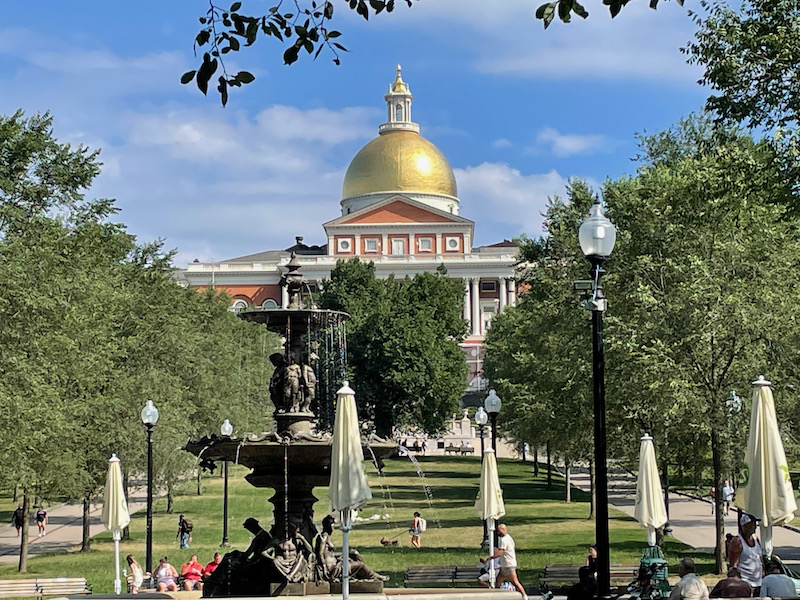
Just next to Boston Commons is the Park Street Church, which dates back to 1804. The building itself dates back to 1809 and has a 217 foot-tall steeple. Another bit of trivia: it was the tallest building in the United States from 1810 to 1828. As you go inside and up the stairs, there was this nice stained glass window. The interior is quite plain but very well-kept. The organs are in each corner.
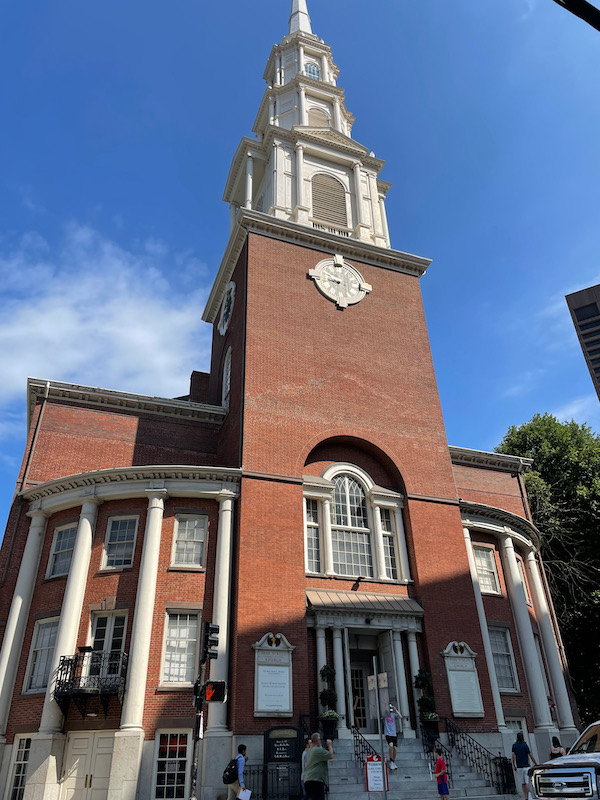
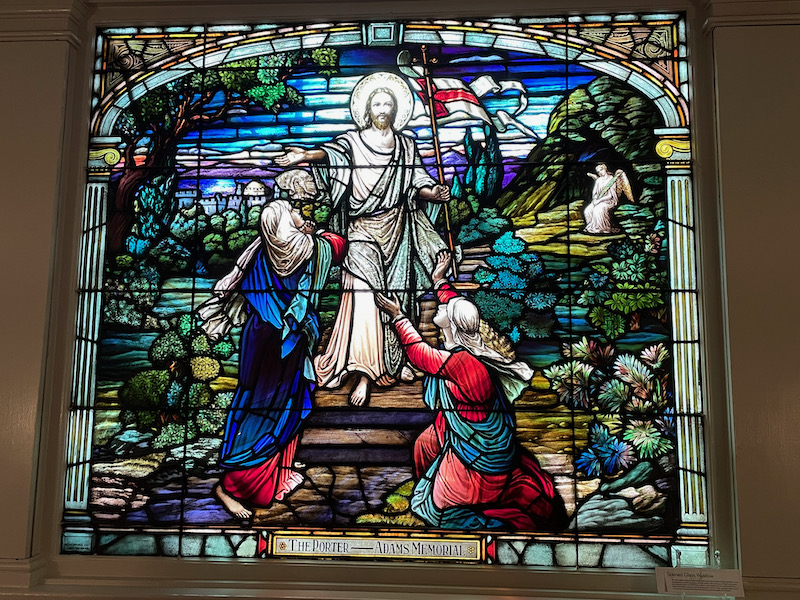
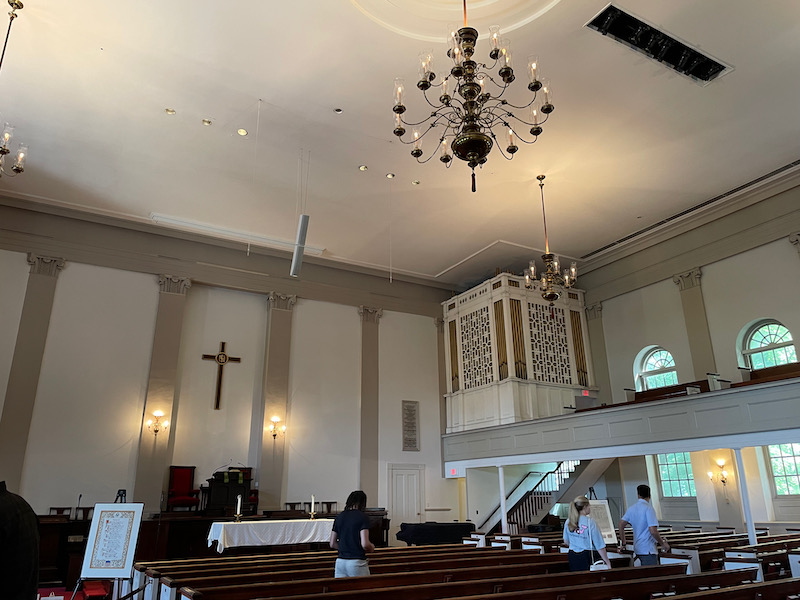
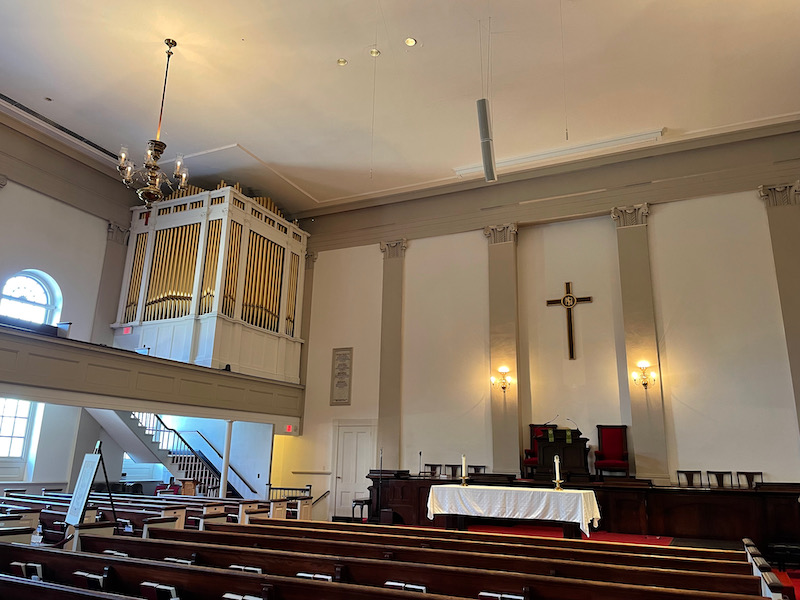
As we walked around, we saw a lot of really nice old buildings, architecturally. They are interspersed with the brand new glass buildings, which makes it a very interesting city to walk around.
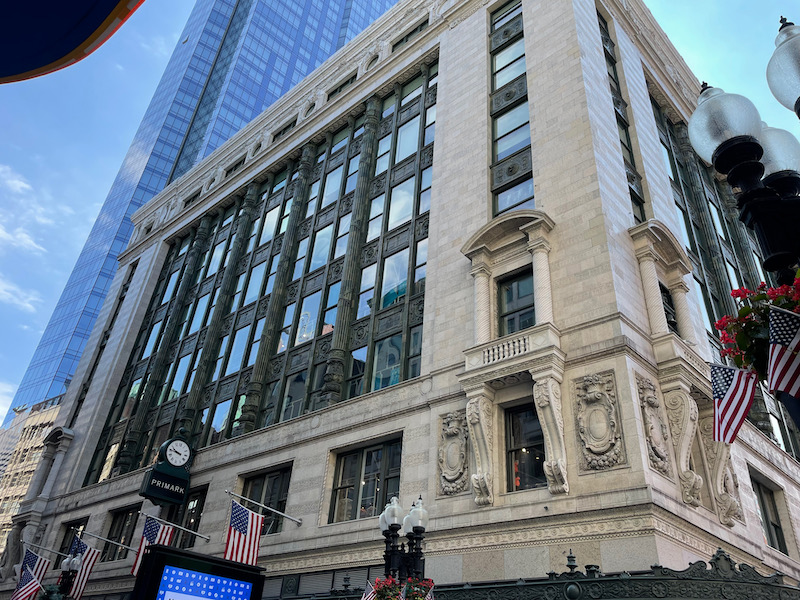
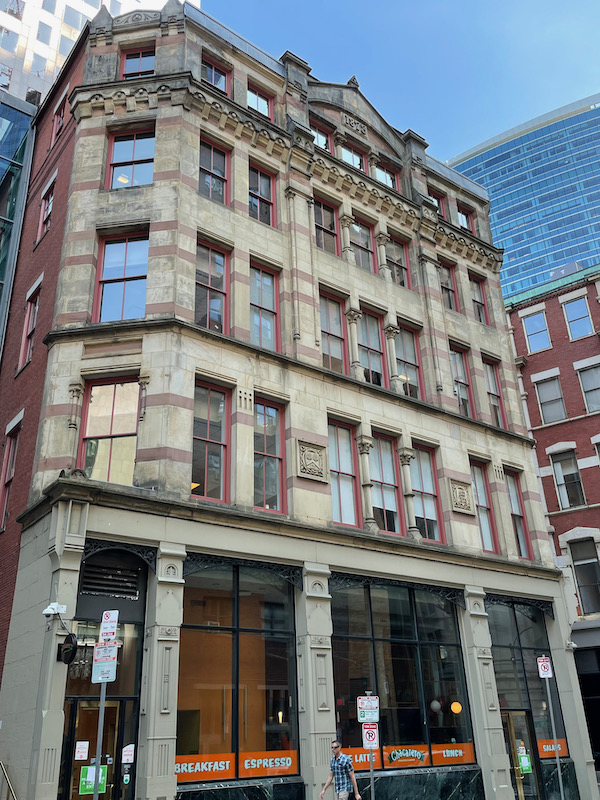
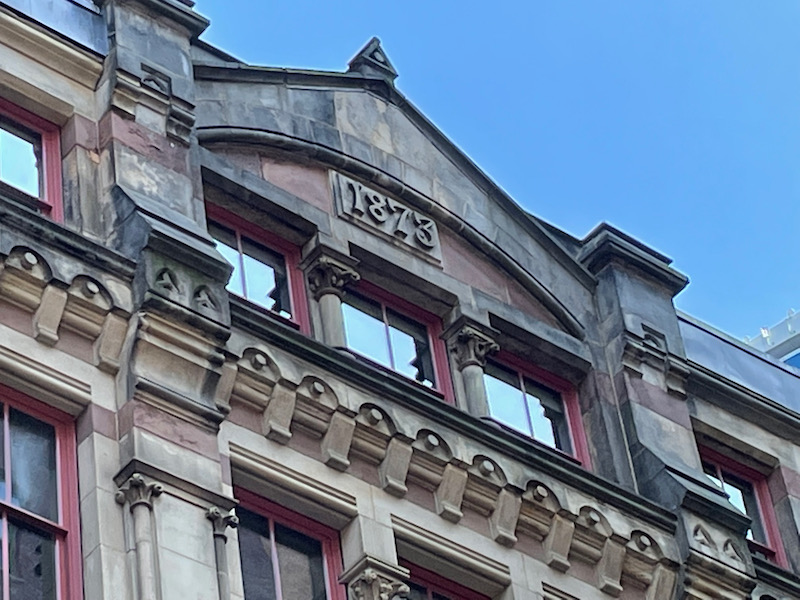
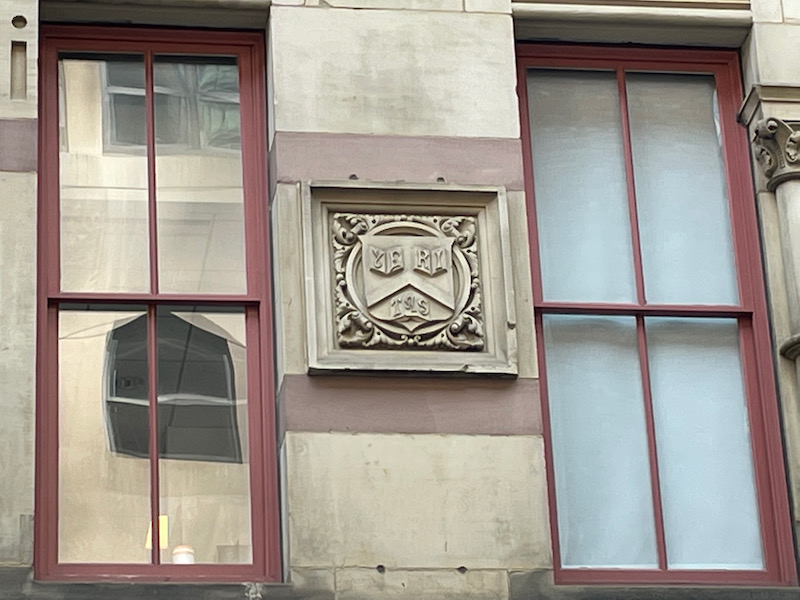
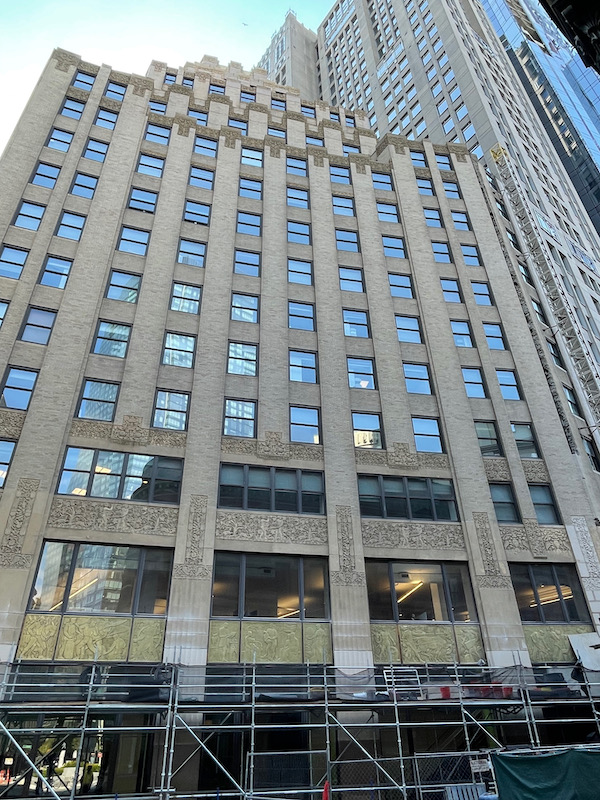
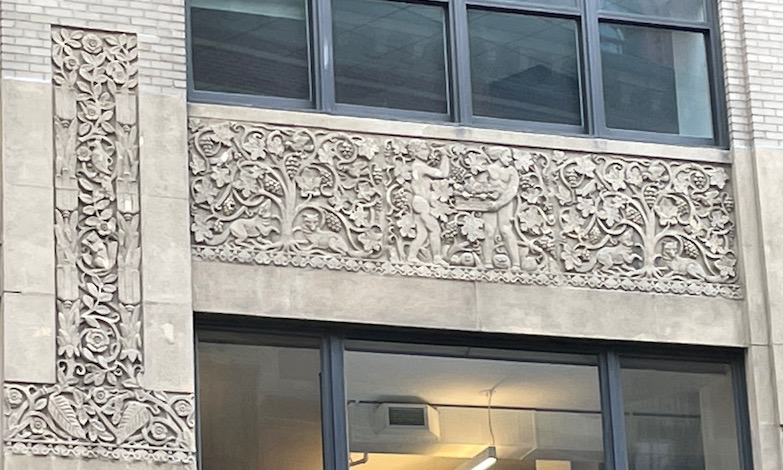
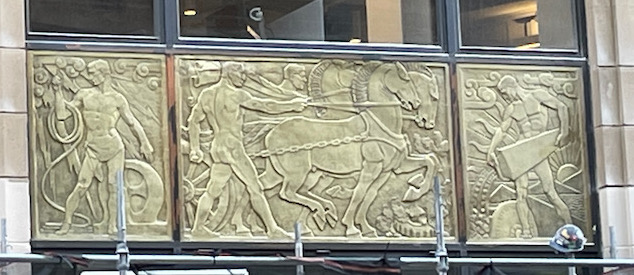
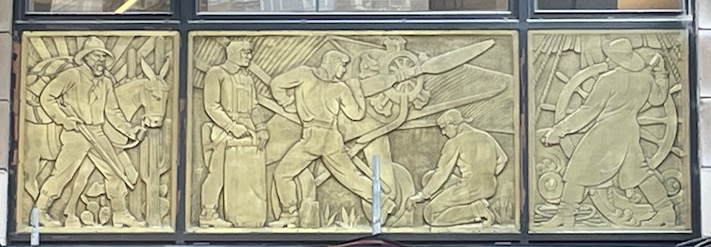

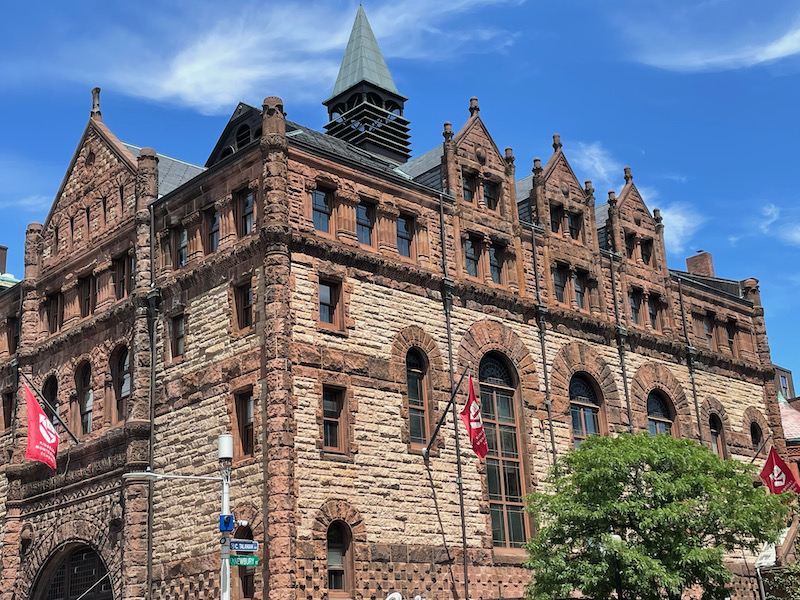
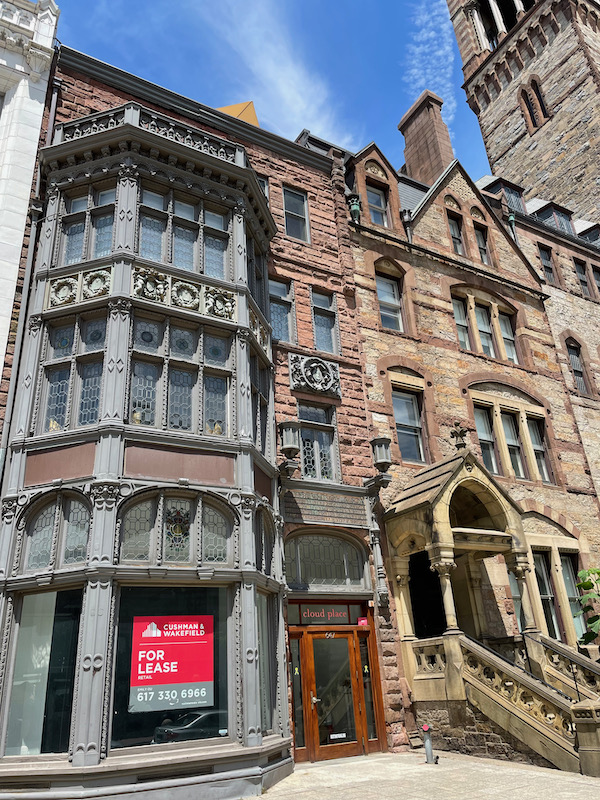
This one is very narrow and is the entry to one of the subway stations.
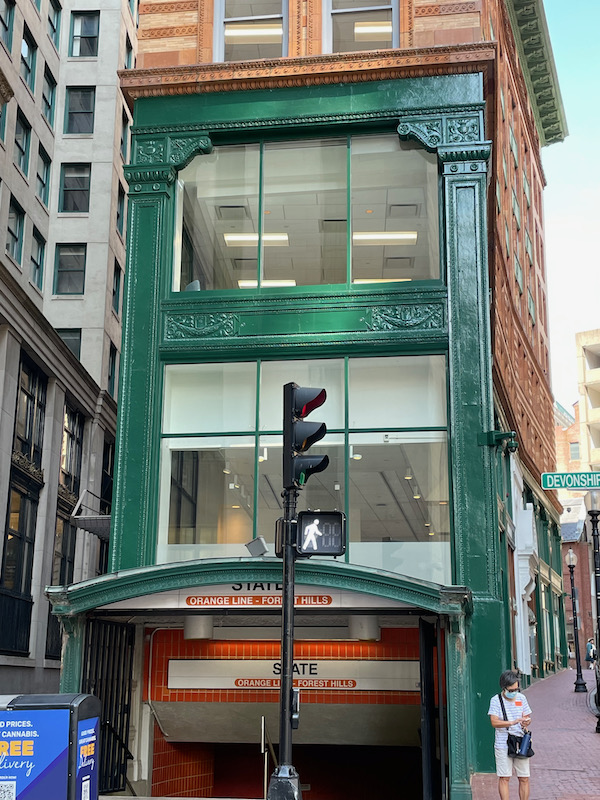
The Old State House was built in 1713 and was the seat of the Massachusetts General Court until 1798. It is the oldest surviving public building in Boston, and is now a museum (which we didn't go into). The lion and unicorn on the roof of the building are the same used in the Coat of Arms of the United Kingdom, a reminder of the building's past.
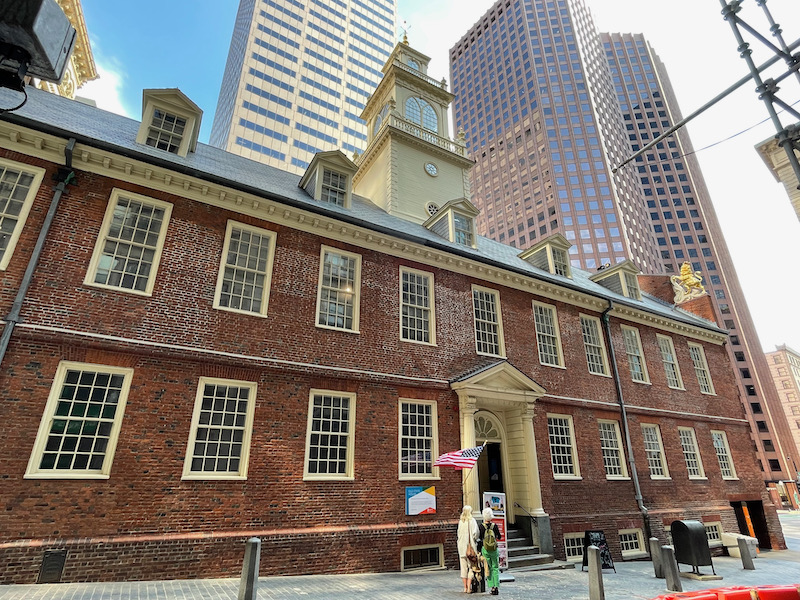
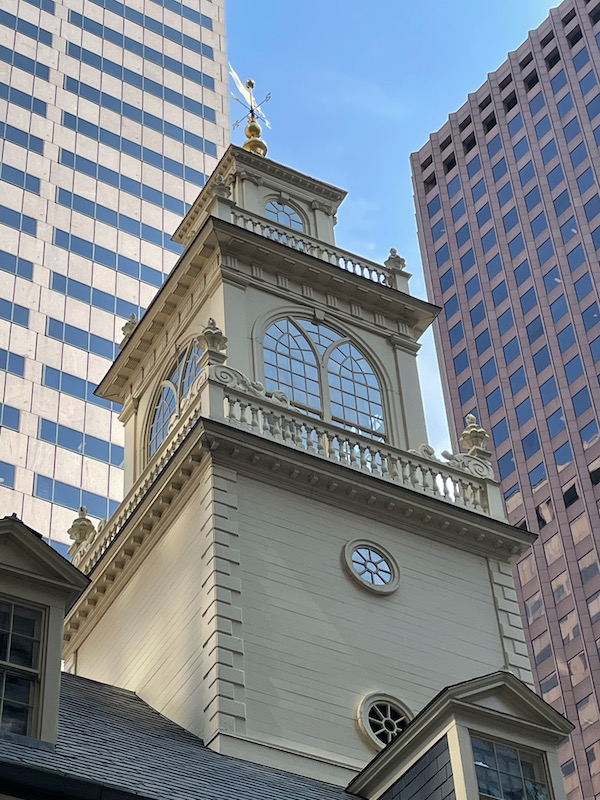
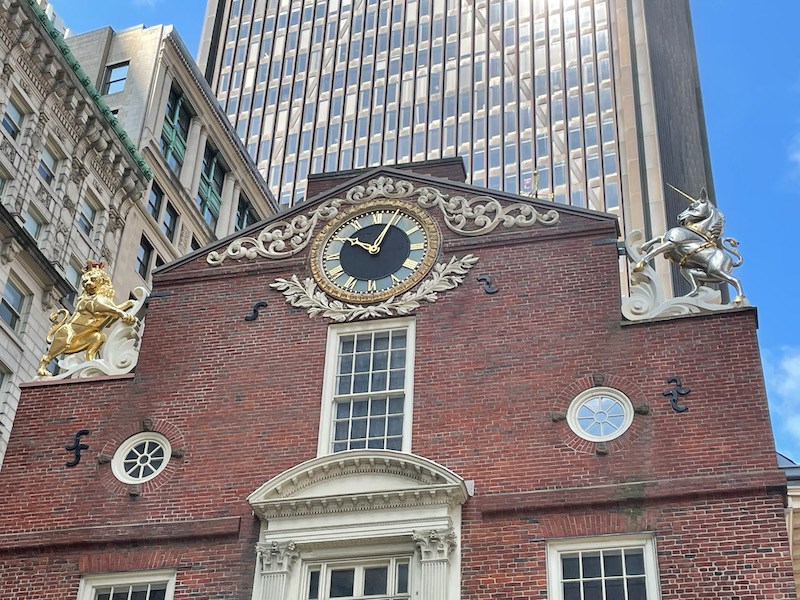
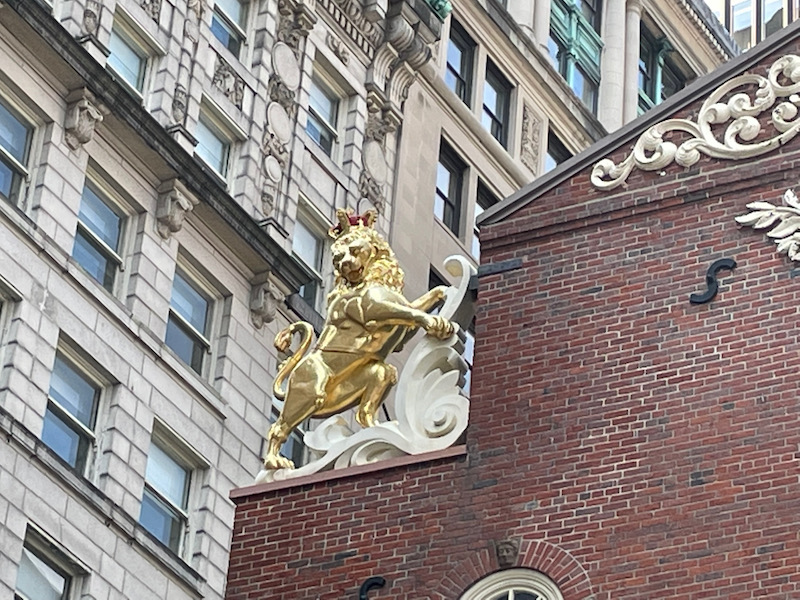
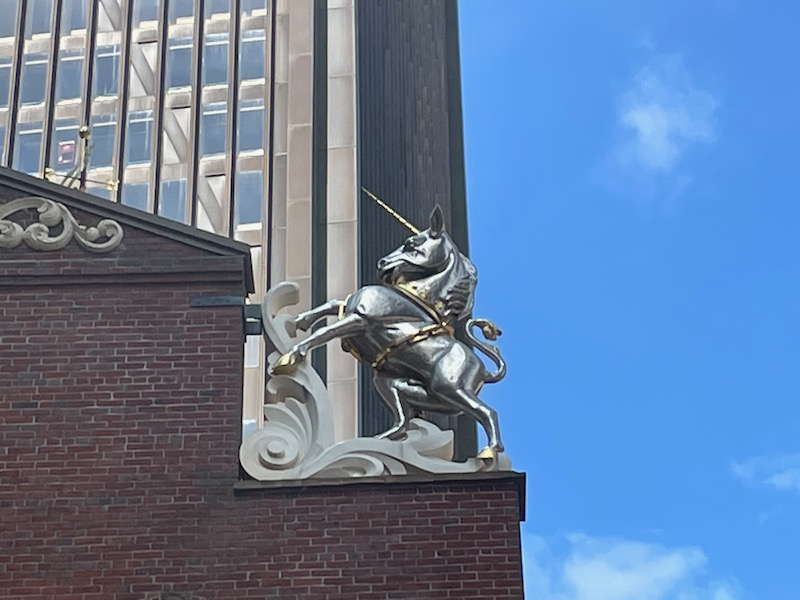
The Paul Revere house was built about 1680, making it the oldest house in downtown Boston. The architecture/design is typical of early Massachusetts Bay timber construction. It didn't always look like this, however. After Revere sold the house in 1800, it became a tenement and was heavily remodeled, so much that pictures from 1898 don't show any of the original house. It was purchased in 1902 by Revere's great-grandson to keep it from being torn down and he went about having it restored. One interesting point is that, despite the massive changes that had taken place, 90% of the original structure from 1680 was still there.
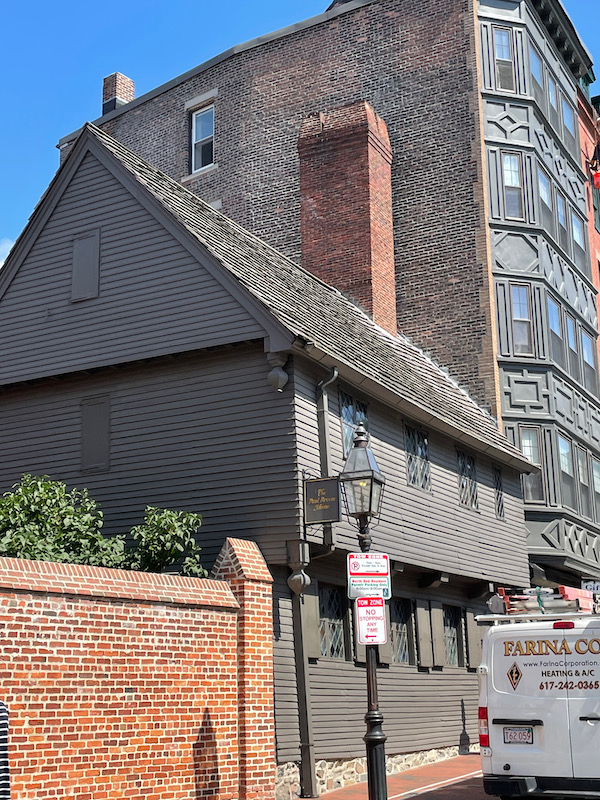
Just down the street from the Paul revere house are rows of buildings that, to me, are quintessential Boston.
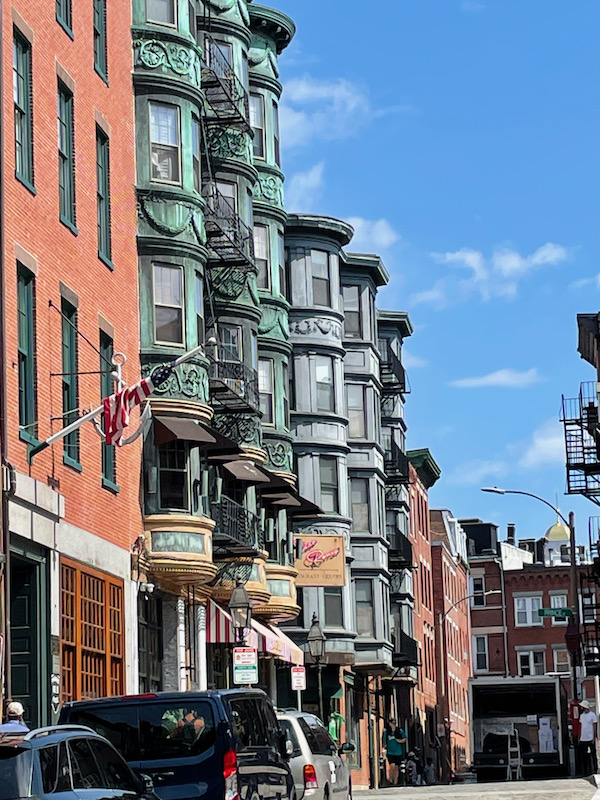
The Old North Church steeple with a statue of Paul Revere. Everyone probably knows about the midnight ride of Paul Revere in 1775 where lights were put into the Old North Church steeple to indicate the direction of the British Army ("one if by land, two if by sea"). Mind you, the troops were not actually going "by sea" as they were, in fact, going up the Charles River. It became famous in 1860, when Henry Wadsworth Longfellow wrote a poem about the ride.
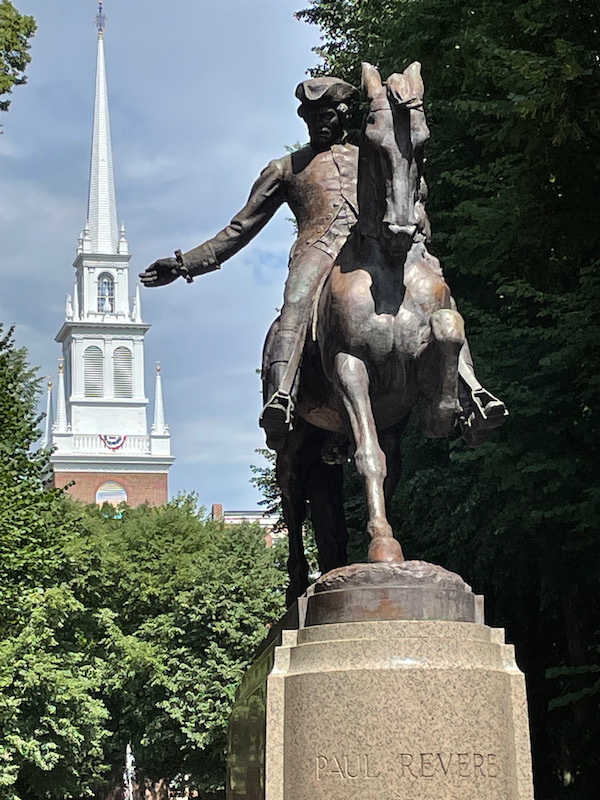
We also headed to Copp's Hill Burying Ground, a historic cemetery founded in 1659 and is the 2nd oldest cemetery in the city. It is named for William Copp, a shoemaker who lived nearby. It contains quite a few marked graves from the colonial era. Most of the gravestones were placed before 1825 and there are a few very common symbols found on the upper part of the stones including a winged skull (sometimes called Death's Head) and a winged angel. I grabbed a few pictures of these.
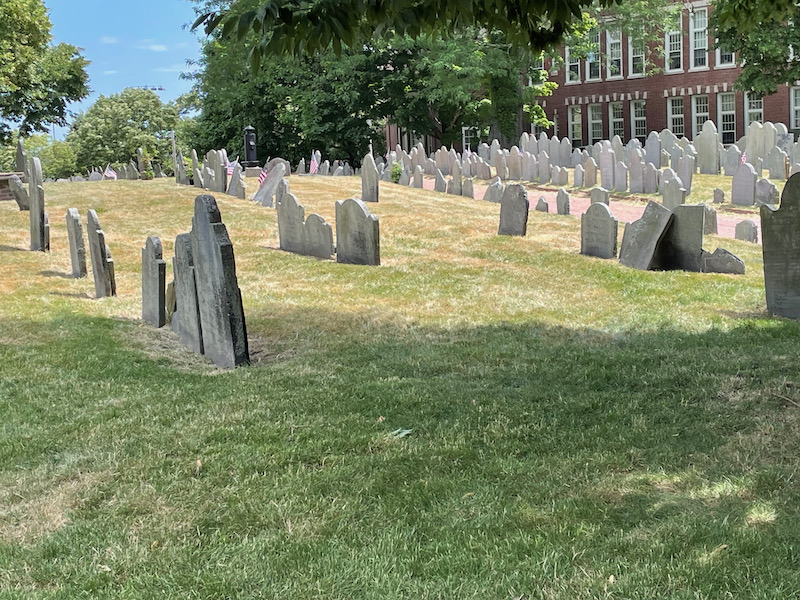
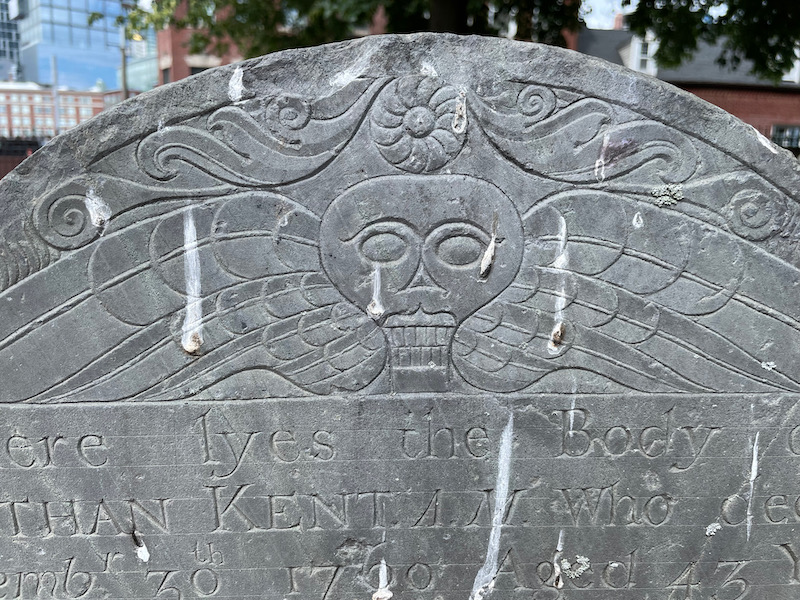
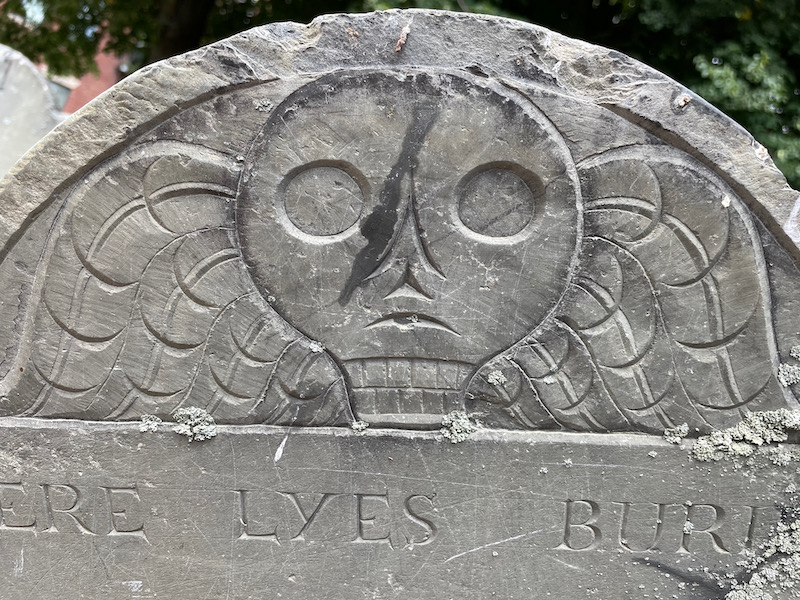
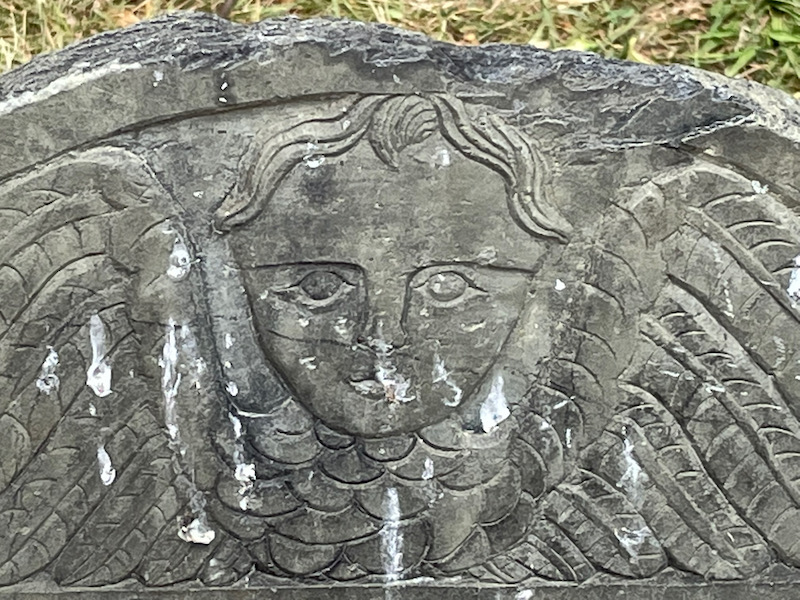
The oldest grave is that of David Copp, who died in 1661. This is the infant grandson of William Copp, who died at about 2 weeks of age. You can read that on the gravestone, which says "David, son to David Copp and Obedience, his wife, aged 2-weeks, died Dec 22, 1661".
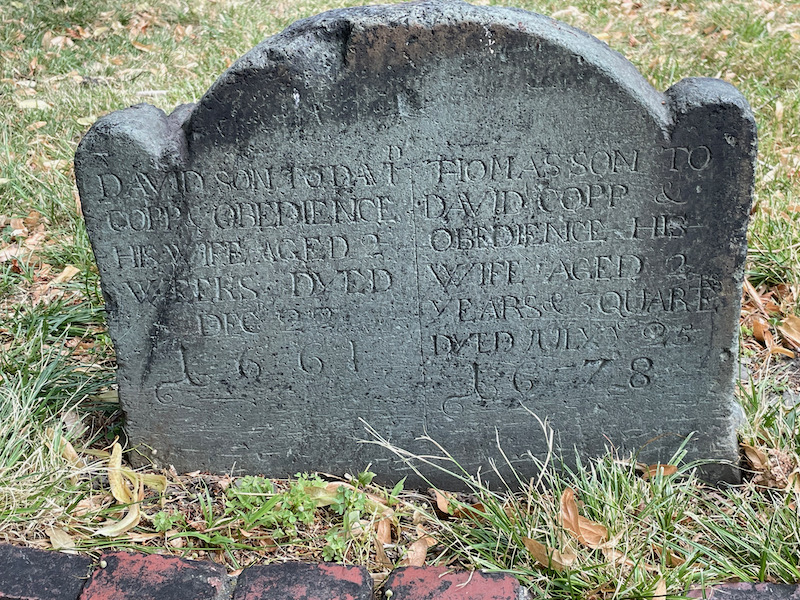
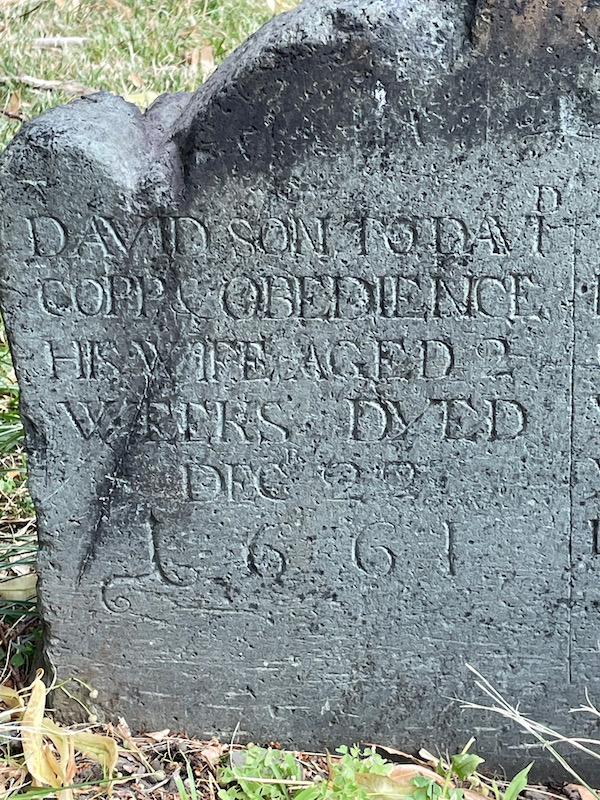
Walking along the water, we came across a sign that talked about the "Gigantic molasses wave", which peeked our interest. In 1915, a 5-story steel tank was built here to store molasses. On January 15th, 1919, the tank burst and a 30-foot high wave of fast-moving molasses went through the neighborhood, suffocating many in the vicinity. In total, 21 people died. This picture shows the aftermath, with the previous location of the tank at the blue circle/arrow near the top.
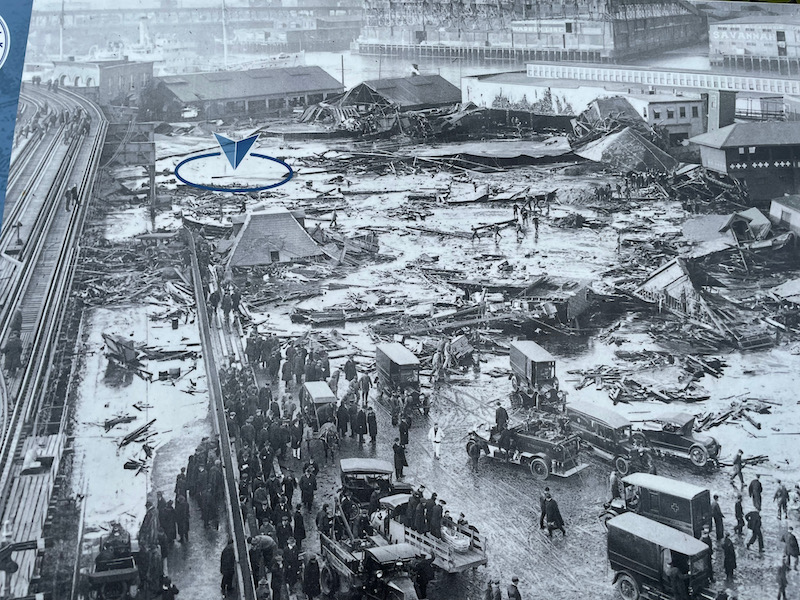
The Old South Church, from 1669, is also quite interesting on the inside. It is much more colorful than the Park Street Church and has some nice stained glass. Similar to the Park Street Church, the organ pipes are in square cases on the corners, but this church also has a huge set of organ pipes in the back, above the entrance to the main church.
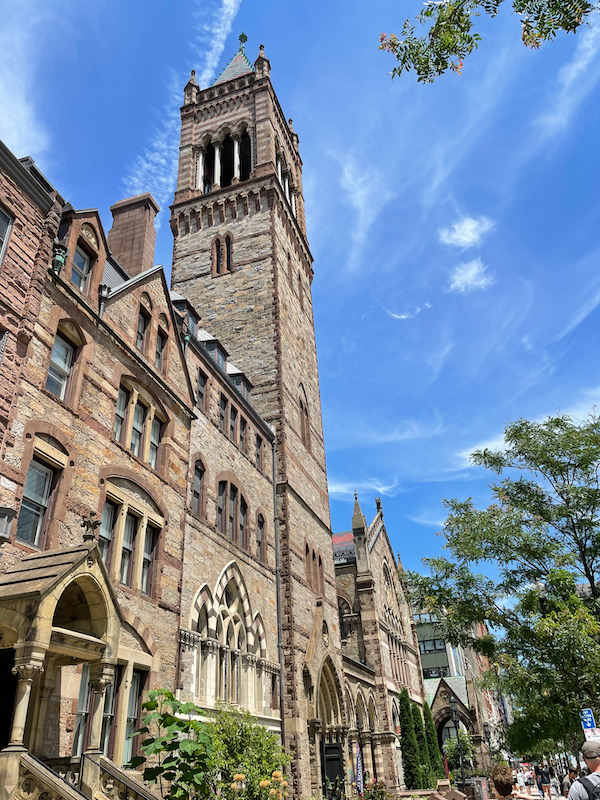
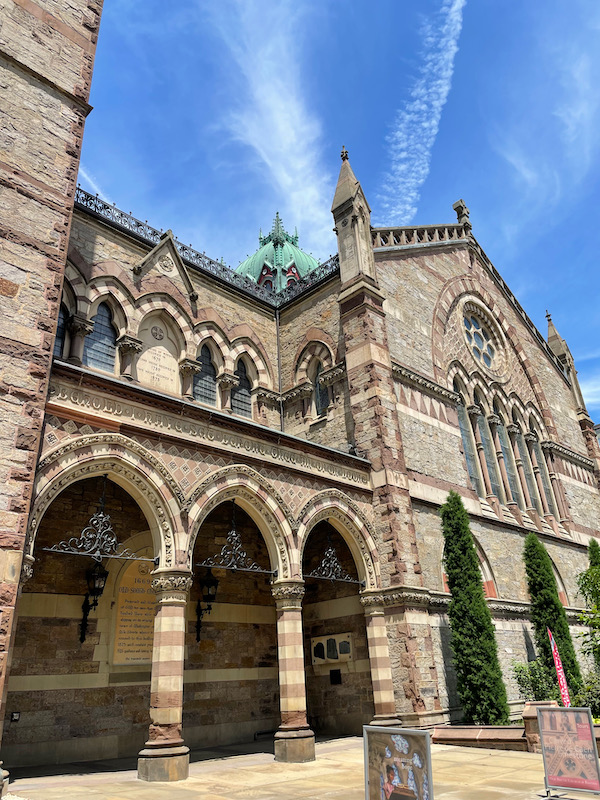
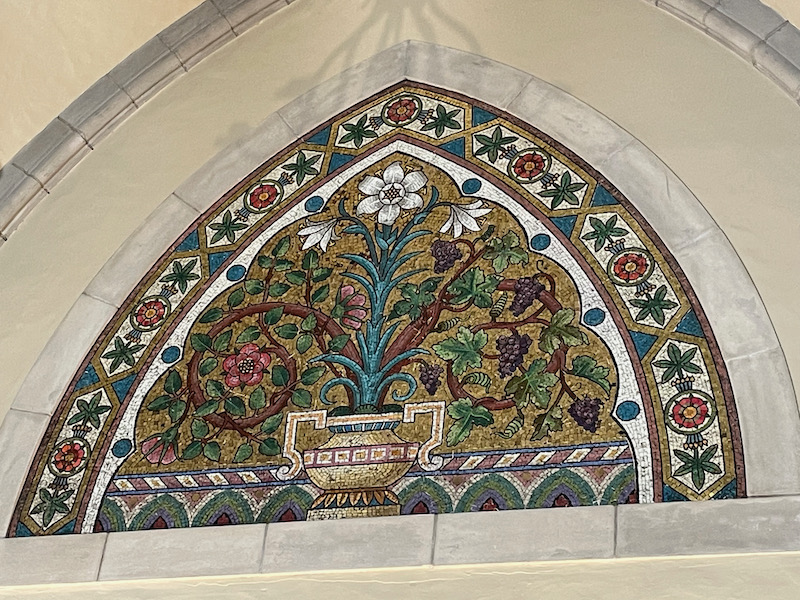
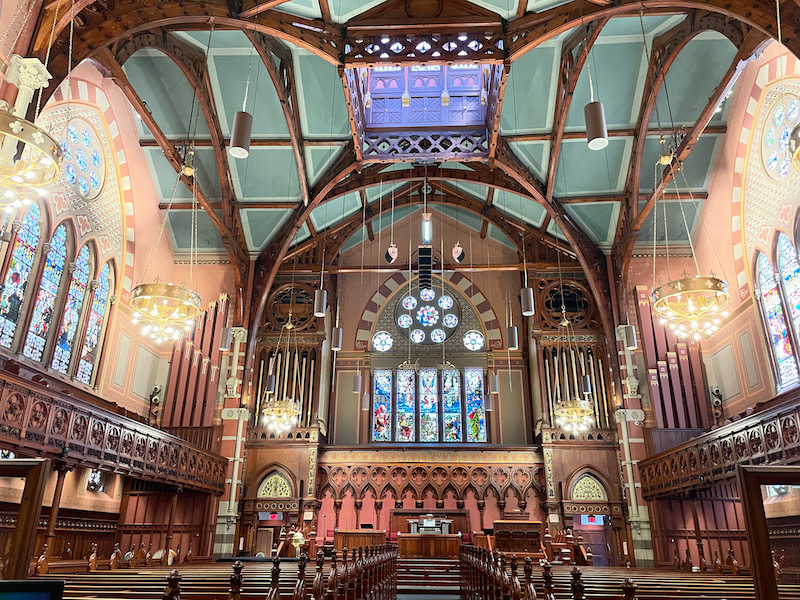
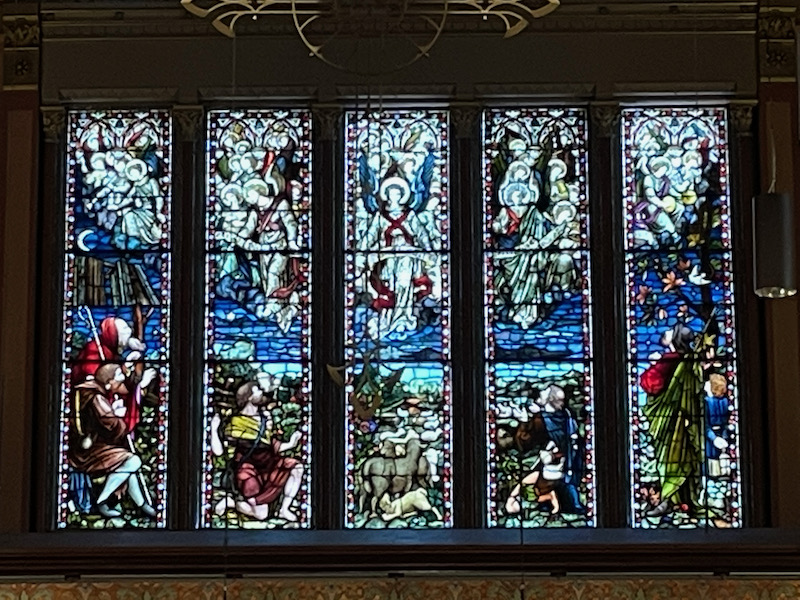
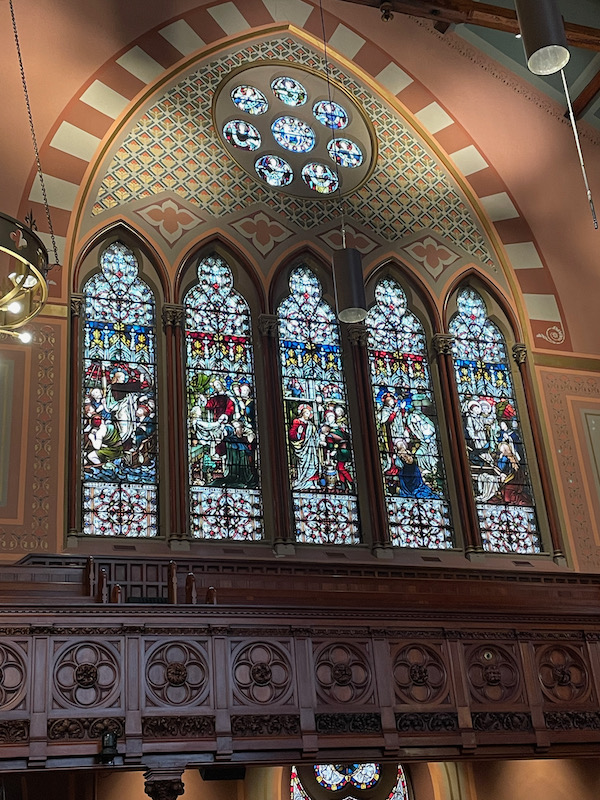
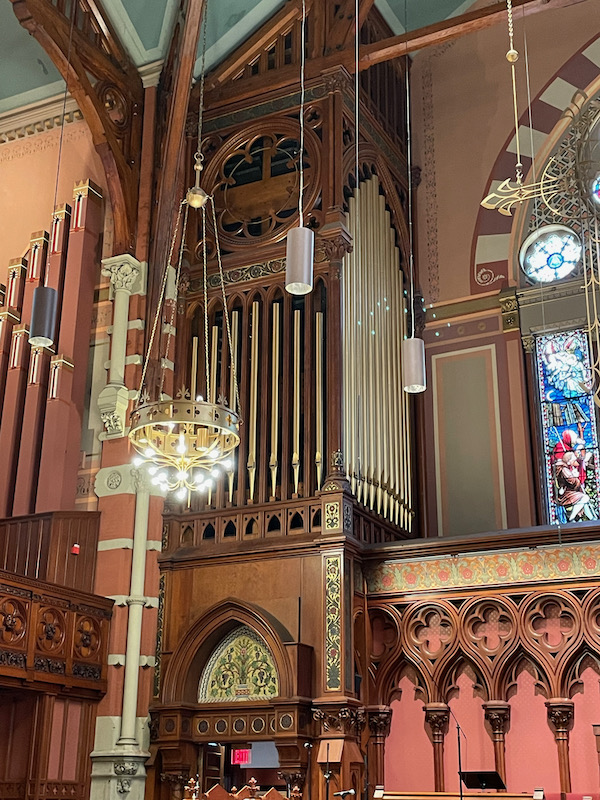
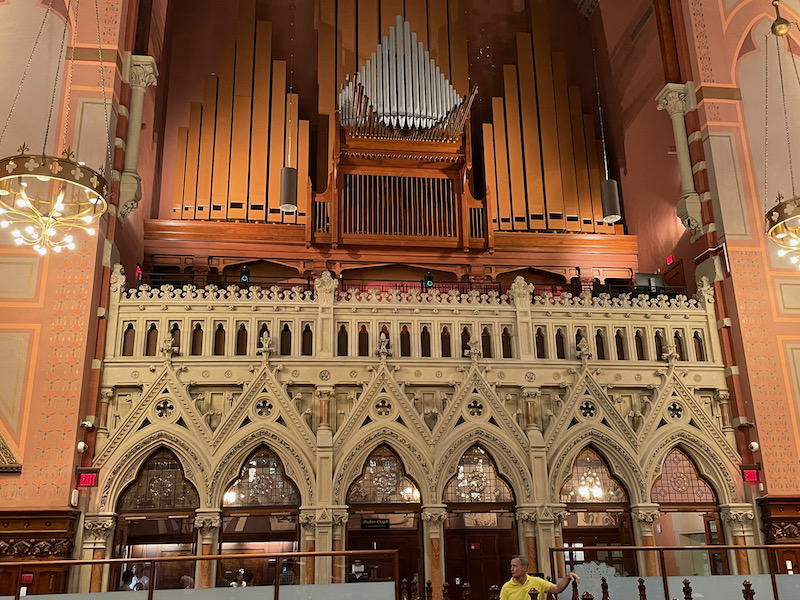
Across the street is a really interesting couple buildings as well, which make up the Trinity Church. The style is called Richardsonian Romanesque, which is characterized by a clay roof, polychromy, rough stone, heavy arches, and a massive tower.
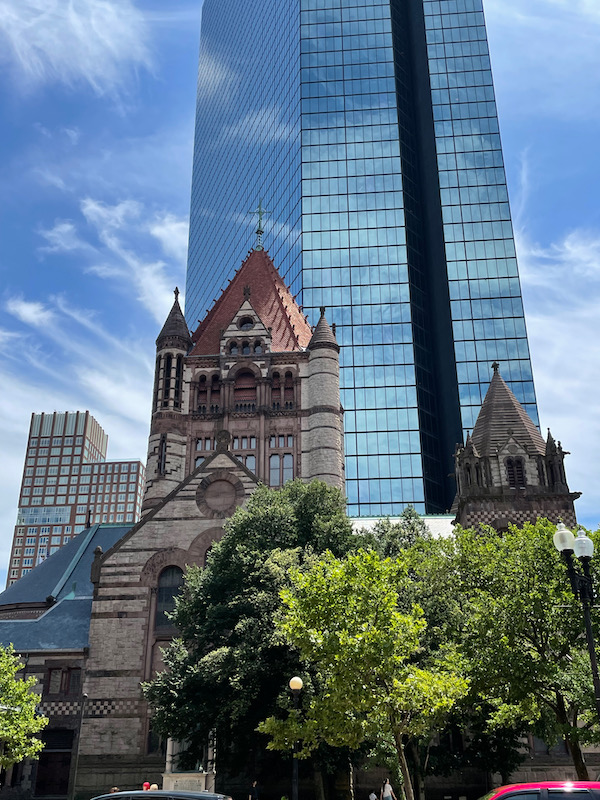
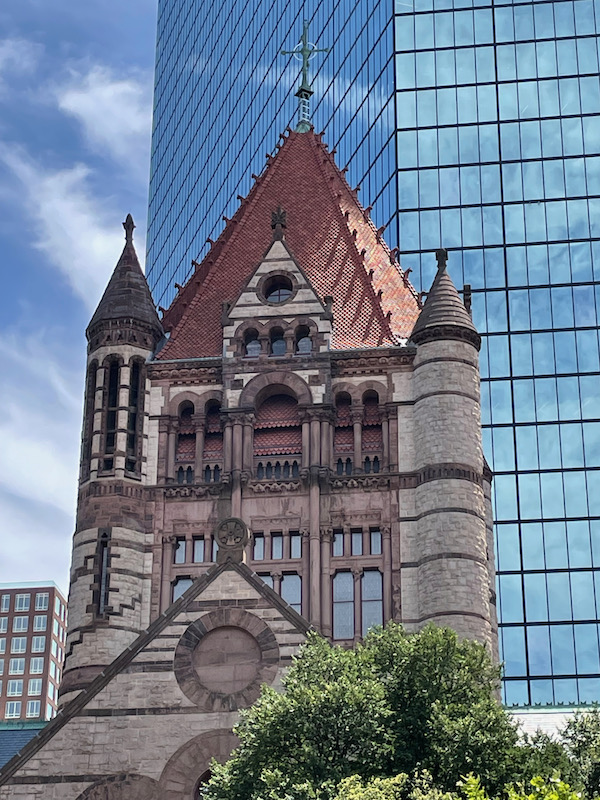
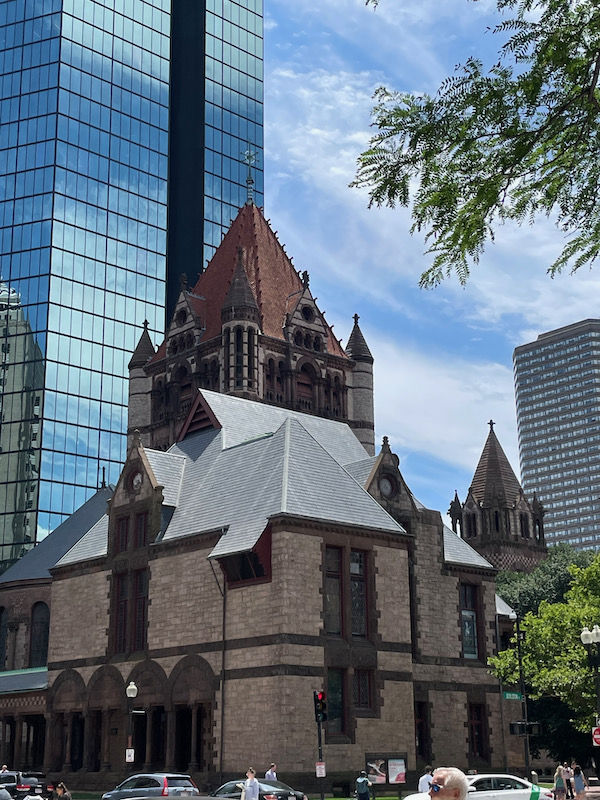
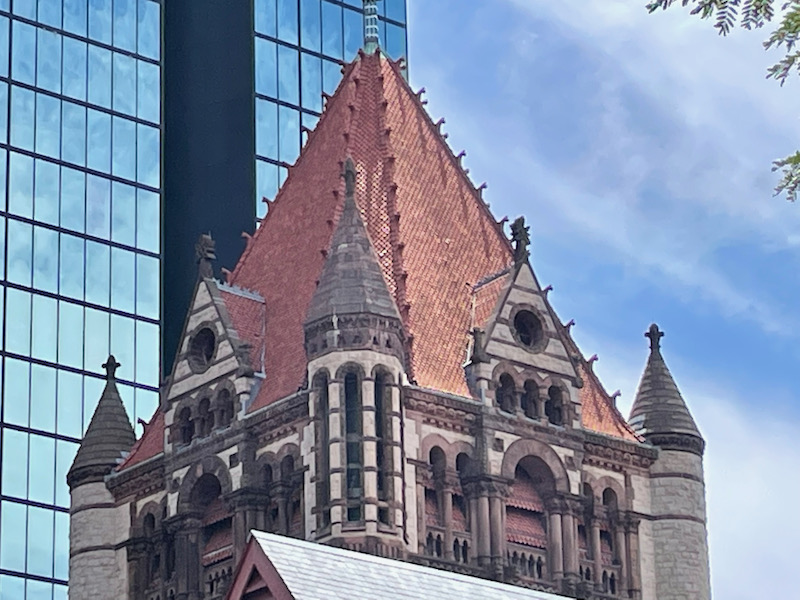
Another really nice building, The Berkeley, which was built in 1905. It has a steel-frame with an exterior of glazed terra-cotta, copper and glass.
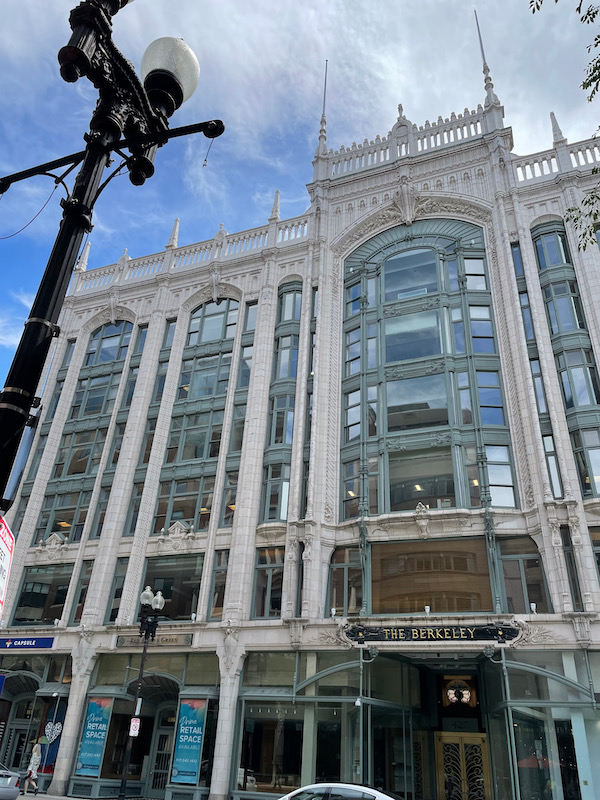
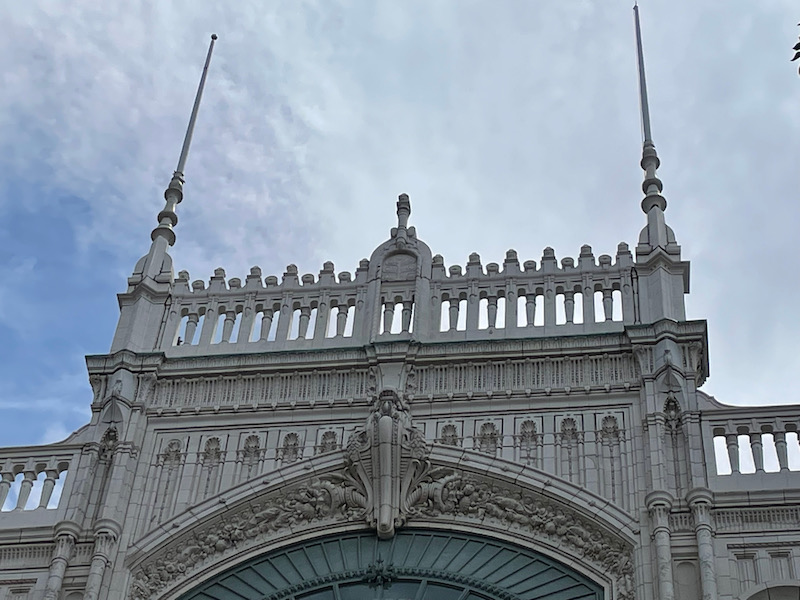
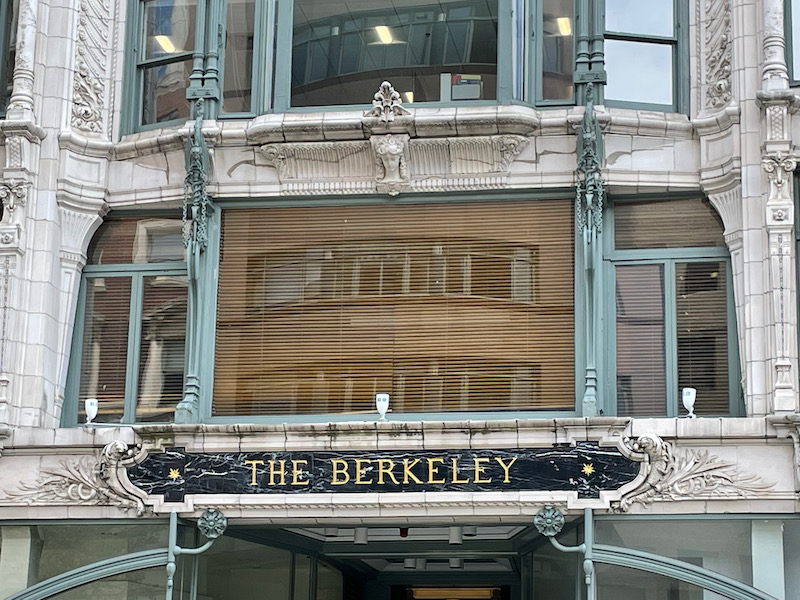
We then took a 1-hour harbor cruise and I took a set of pictures of the skyline. Here are some general pictures, and then I'll have a few special ones that I will make comments on.
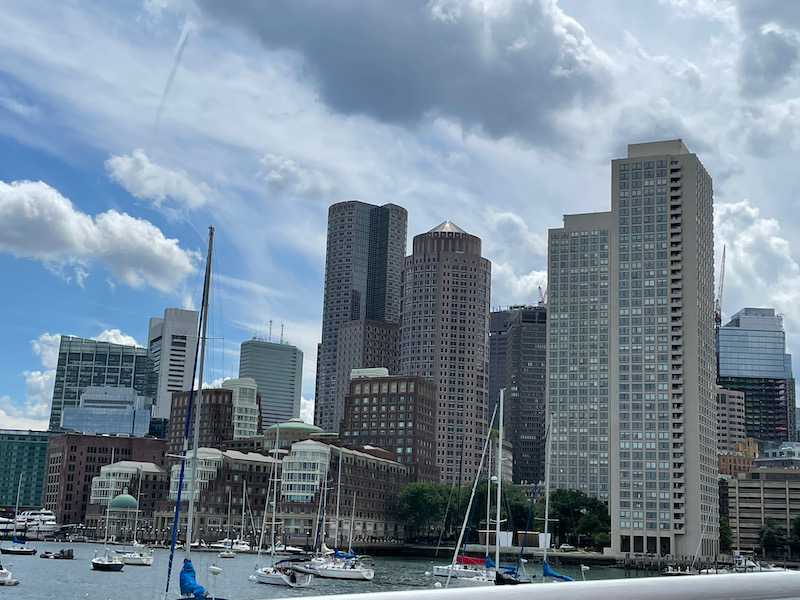
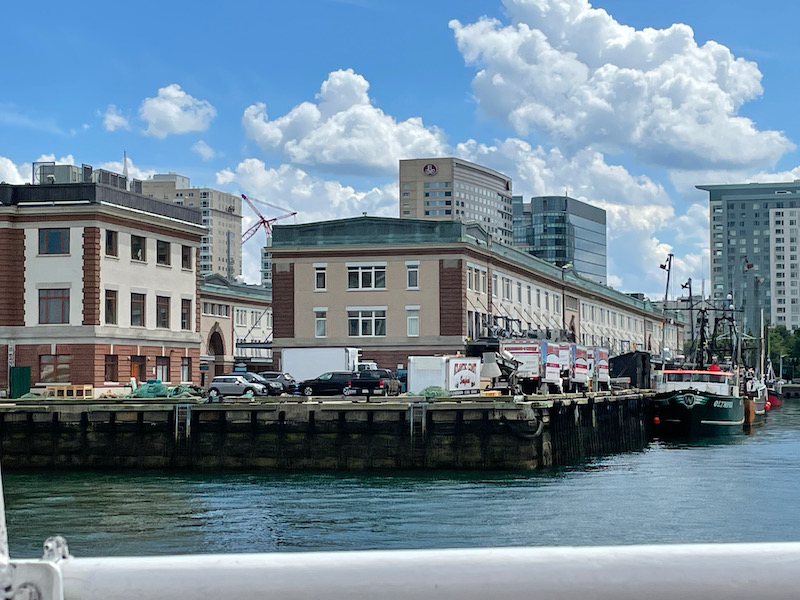
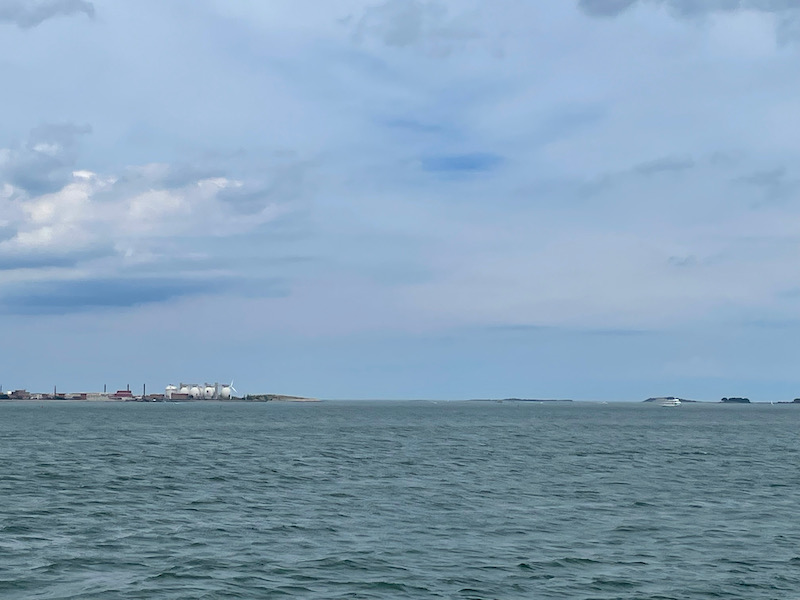
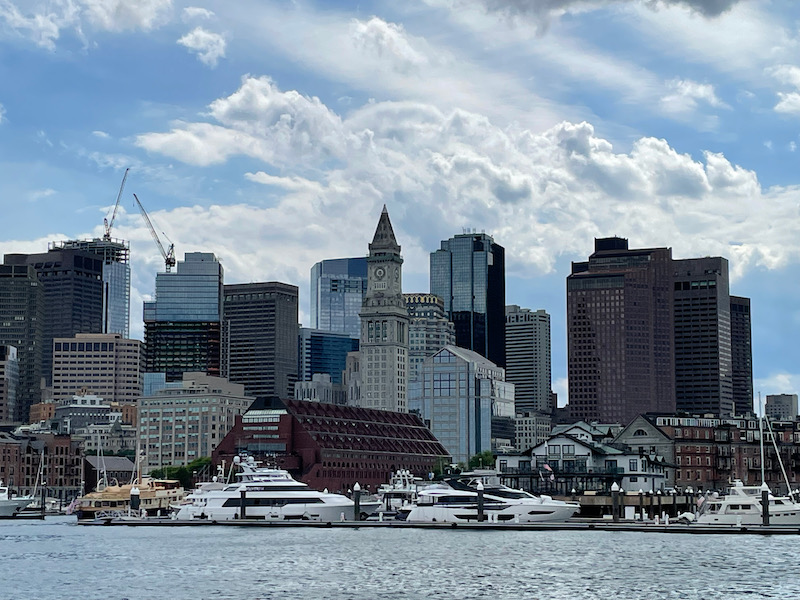
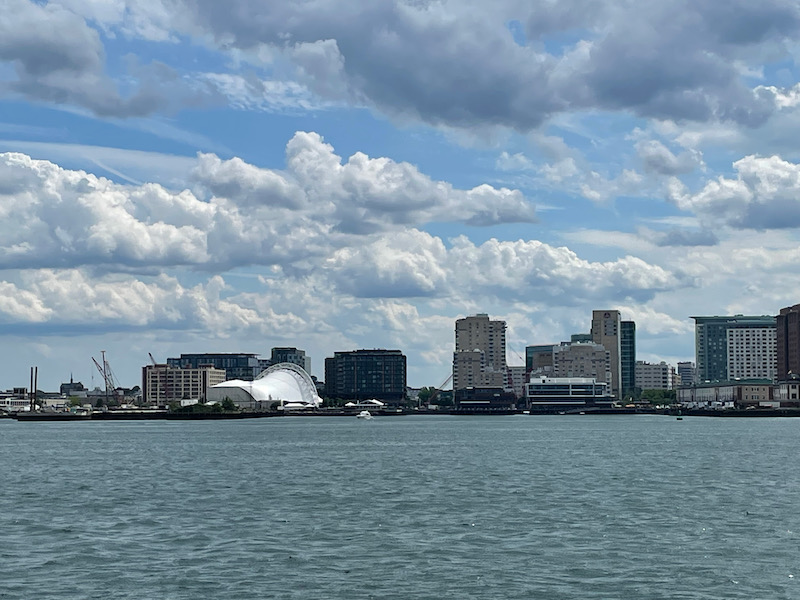
This building is owned by the Legal Seafoods chain and it has a 45-foot-long sculpture on the seaside corner of the roof. It is meant to be an abstract rendition of a New England cod. Not only does it look nice, but it is also a scientific instrument useful for boaters. The scales are freewheeling rotors that move in response to prevailing currents of wind direction. The eye of the giant fish changes color in response to wind speeds, according to the Marine Beaufort Scale.
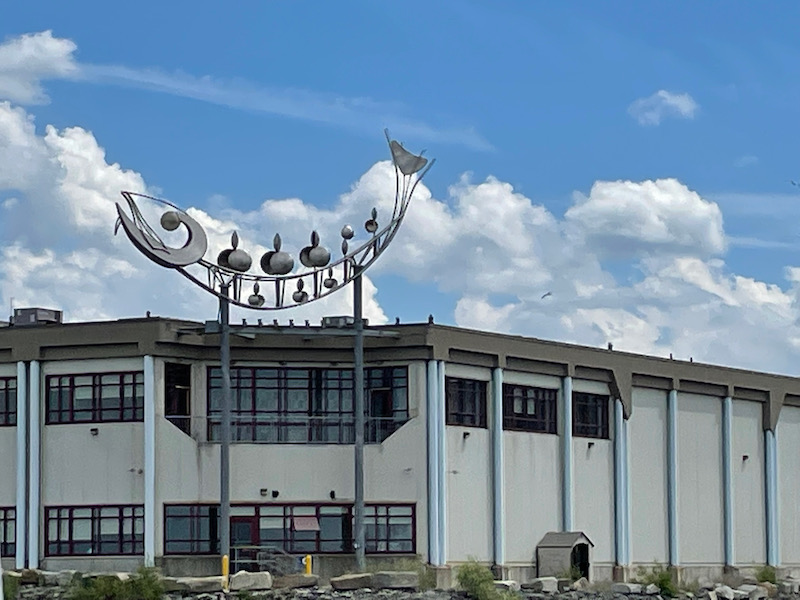
Fort Independence is one of the oldest continuously fortified sites of English origin in the US. The first fortification, called The Castle, was built in 1634 by the British and then rebuilt after it was abandoned during the American Revolution. The existing granite fort was constructed between 1833 and 1851.
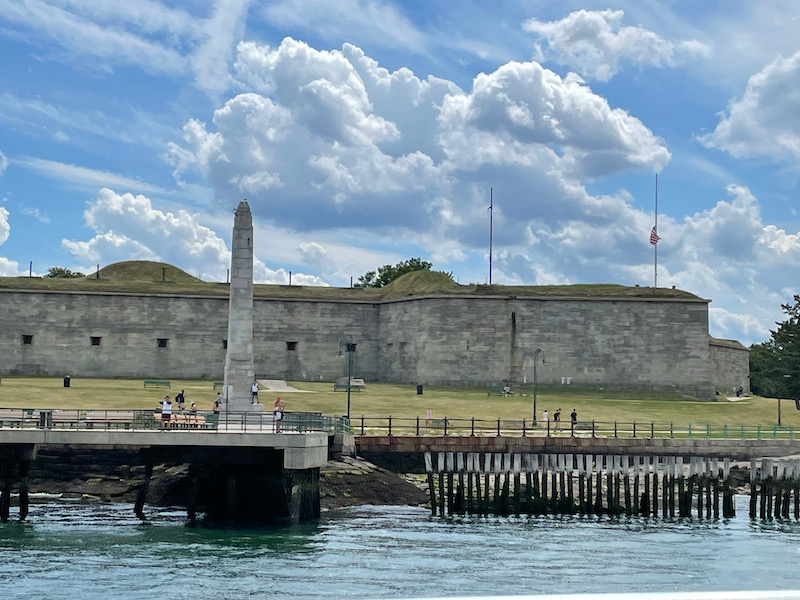
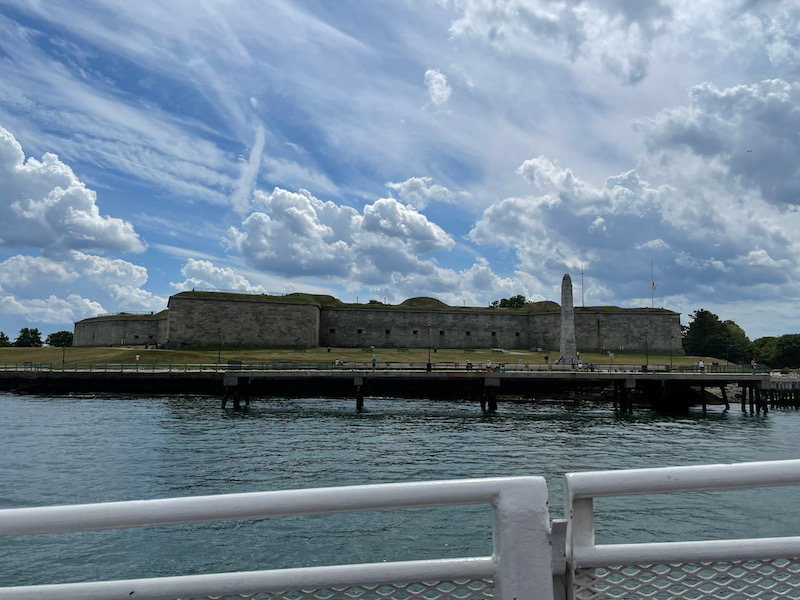
This looked like just another boat to me, but it is actually the US lightship Nantucket, the last surviving lightship. You might ask what a lightship is ... think of it as a moveable lighthouse.

This lovely ship is, in fact, a floating restaurant! It is called "The Tall Ship" and it is a 245' vessel that is now a floating oyster bar moored on Pier One in East Boston.
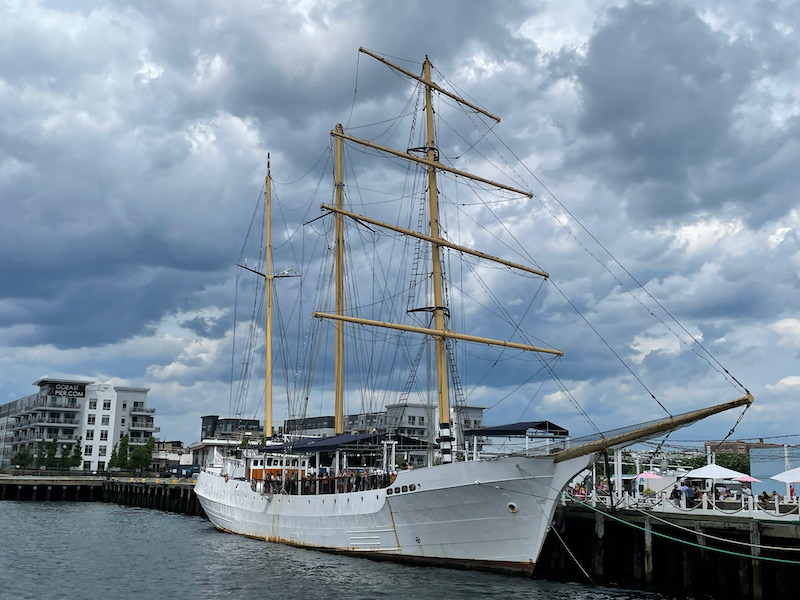
I think that this is the Bunker Hill monument, which was erected between 1825 and 1843 at the site of the famous Battle of Bunker Hill. You can climb 294 steps to the top of the 221-foot obelisk, which is built out of granite from a quarry nearby in Quincy.
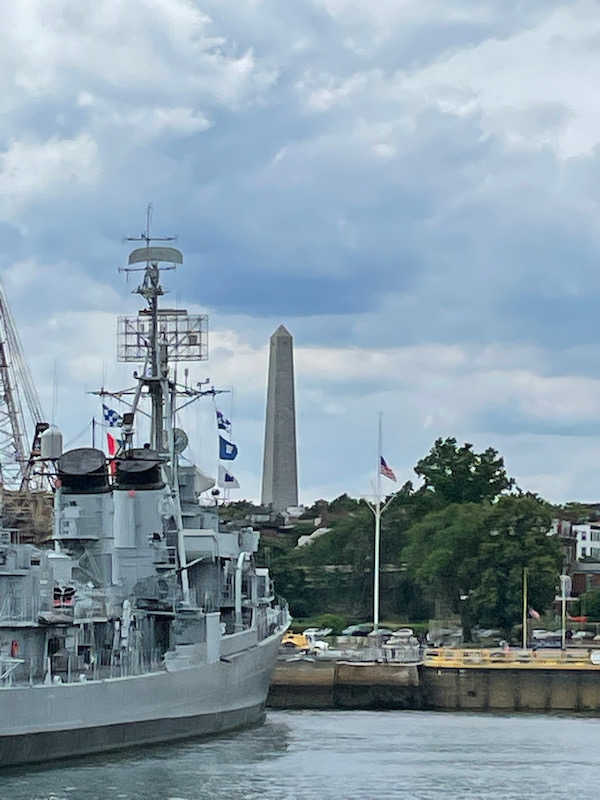
These two military boats are docked near the Charlestown Naval Shipyard, and there is a visitor center and a museum that can be visited, if you are interested in that type of thing. The first ship is the USS Cassin Young, a Fletcher-class destroyer named for Captain Cassin Young, who was awarded the Medal of Honor for his heroism at the Japanese attack on Pearl Harbor and killed in the Naval Battle of Guadalcanal in the fall of 1942. The ship is one of only four surviving Fletcher-class destroyers still afloat. The second is the USS Constitution, also known as Old Ironsides. It is a 3-masted wooden-hulled heavy Navy frigate and is the world's oldest ship still afloat having been launched in 1797. Behind the ship, you can see the Bunker Hill monument again.
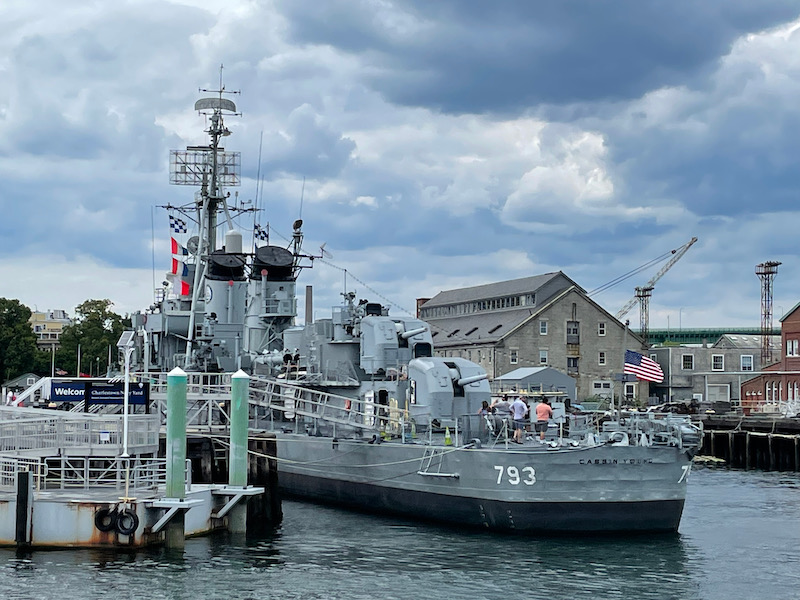
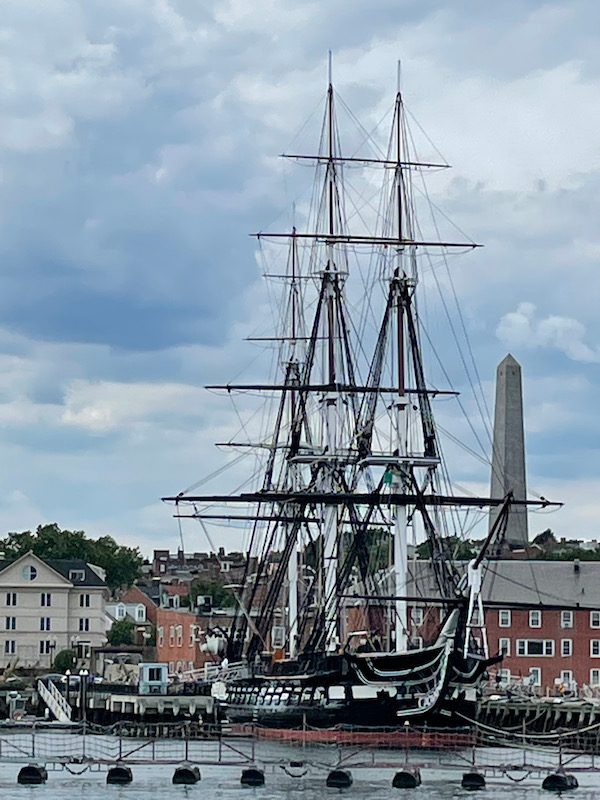
This was an interesting little piece of trivia. This bridge was designed to take two things into account ... the Bunker Hill monument and the masts of the USS Constitution. If you look at the bridge, the center mast looks like the Bunker Hill monument, and the suspension wires mimic the ropes on Old Ironsides.
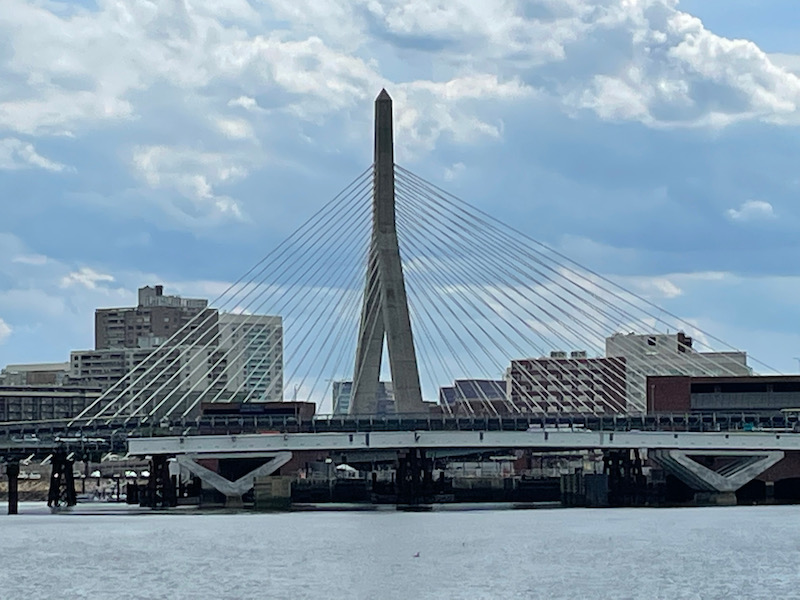
Last building is the Custom House, a Greek-Revival style building completed in 1847. Originally, it was literally on the waters edge so that arriving ships could touch the building (to pay the taxes on the cargo). The tower was added in 1913, and in 1995, it was converted to timeshare apartments.
